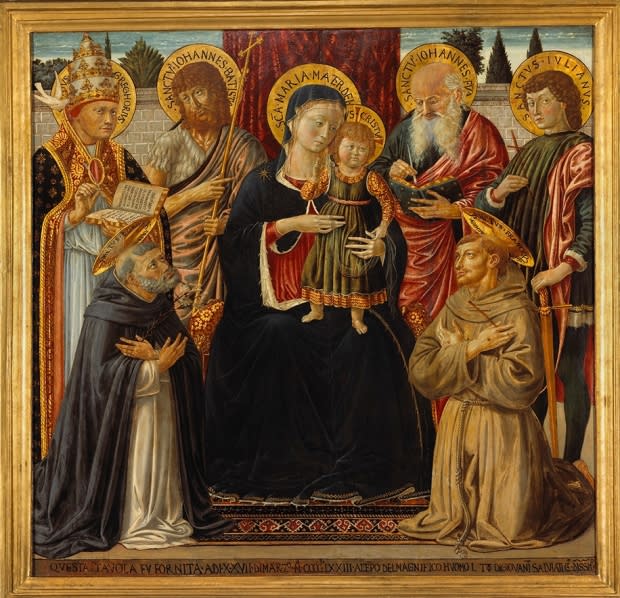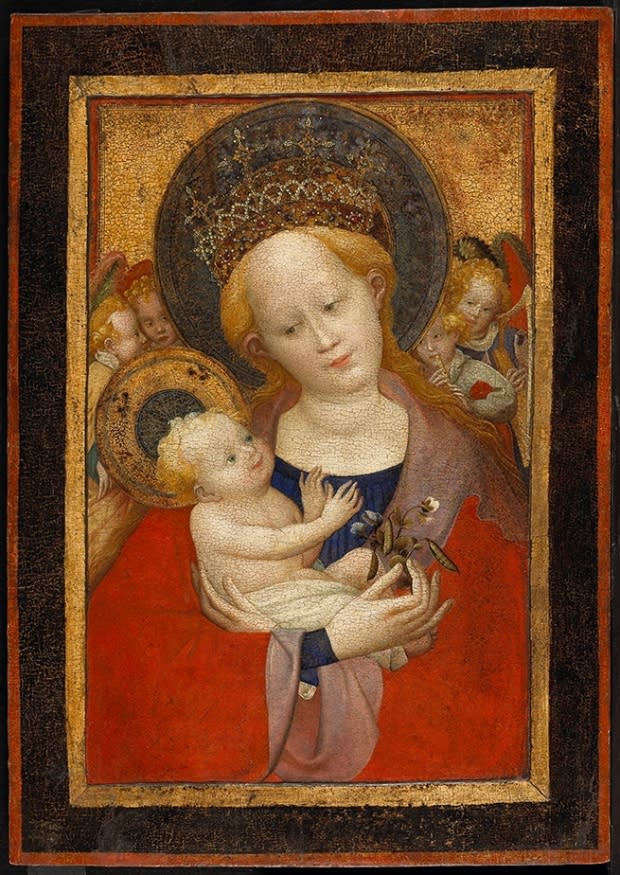Why do Renaissance babies look like little old men?
Ever wonder why so many babies in old paintings bear a striking resemblance to Winston Churchill?
The National Gallery of Canada is exploring why Renaissance babies were depicted to look more like little old men than the ideal Gerber cutie-pie.
In the early 1300s, art commissioned by the church often featured Baby Jesus or other holy figures in their infancy. According to art historians, painters were loathe to project these revered subjects as vulnerable or weak. Instead, they tried to paint the babies to look wise and powerful.
As the Renaissance progressed through the 1400s and 1500s, artists began to represent human anatomy more accurately.

Gallery interpreter Laurence Vézina Laprise has researched this phenomenon, and will take visitors on a "lighthearted" virtual tour of the museum's curious Renaissance babies on Saturday, Sept. 12, at 11 a.m. ET.
First, Laprise spoke with CBC's Ottawa Morning.
How would you describe the way Renaissance babies look?
It ranges from a tiny old man to a really muscular baby. Sometimes they are more on the ugly side than on the pretty side. They often have large heads.
Can you help us understand what the artists' intentions were?
Paintings at the time were commissioned mostly by churches. So when they painted a baby they painted Jesus. So they didn't want necessarily to paint a "baby" baby. They wanted to paint a Baby Jesus.

Was it different for the way that they painted baby boys to baby girls?
That's a good question, and the answer is no. We talk about the infant Virgin Mary in one of our paintings and we talk about Jesus as a baby as well. And both of them look like tiny adults.
When did that start to change? When did babies start looking more like babies?
At the beginning of the Renaissance there was still some medieval influence. So a little later in the Renaissance, when they were using more live models, it started to change. They started to see the body differently. They were allowed to paint something other than Baby Jesus. So we see the babies become a bit chubbier and a bit cuter.
Laurence, would you share with us one of your favourite depictions of a baby?
It's a painting by Vincenzo Catena, and it's called The Rest on the Flight over Egypt (c. 1525), and this baby is just gorgeous. He has a really big head and a really small face. I always make a ton of jokes about that baby. The funny part though is that this baby is actually portrayed as more of a baby. So at first glance, he's pretty weird looking, but then if you look carefully, you can see that it's actually really close to what an actual baby could look like, except the head that's oversized.
The virtual tour, Babies in Renaissance Art with National Gallery interpreter Laurence Vézina Laprise begins online today at 11 a.m. You can reach it through the gallery's Instagram account.


